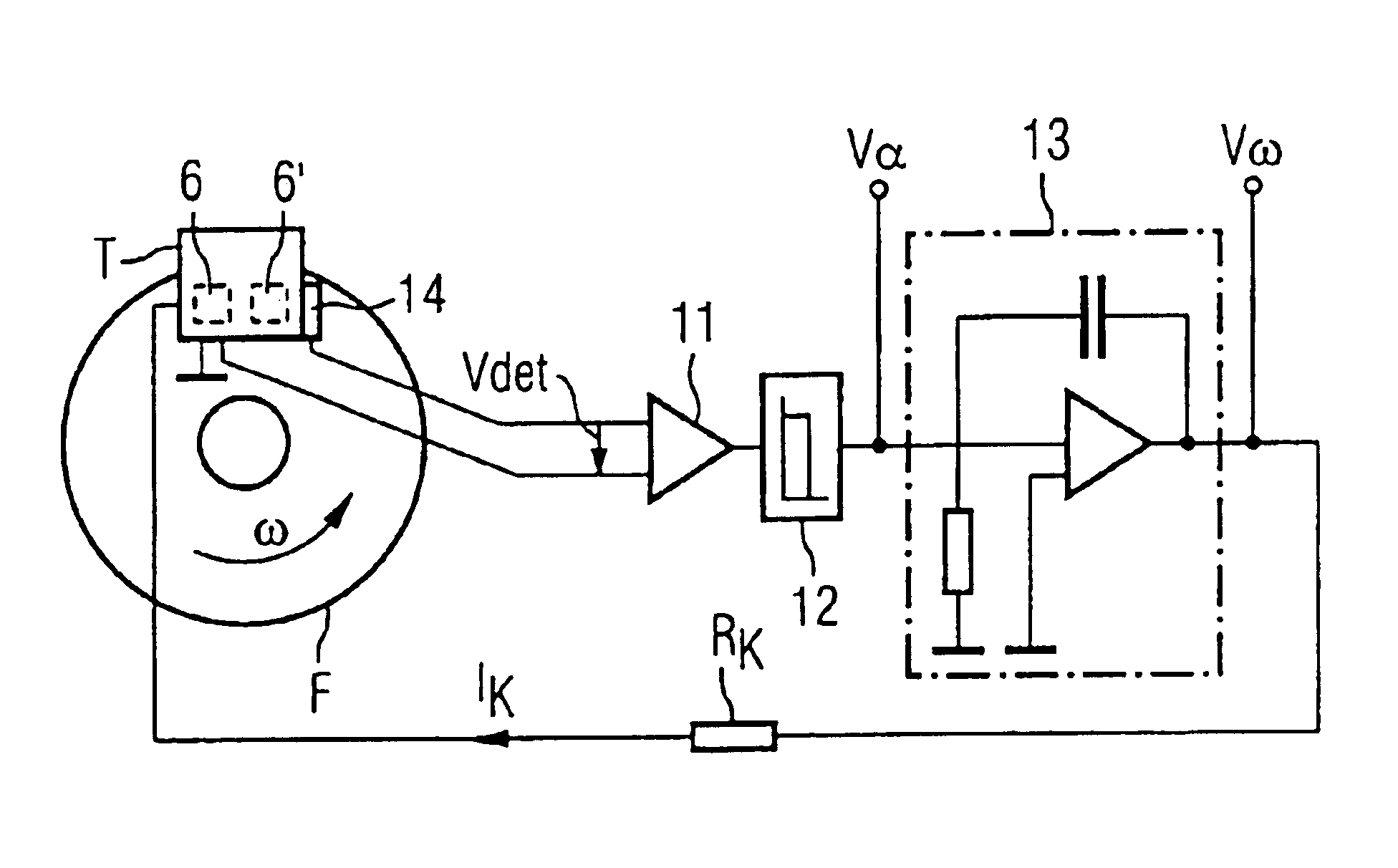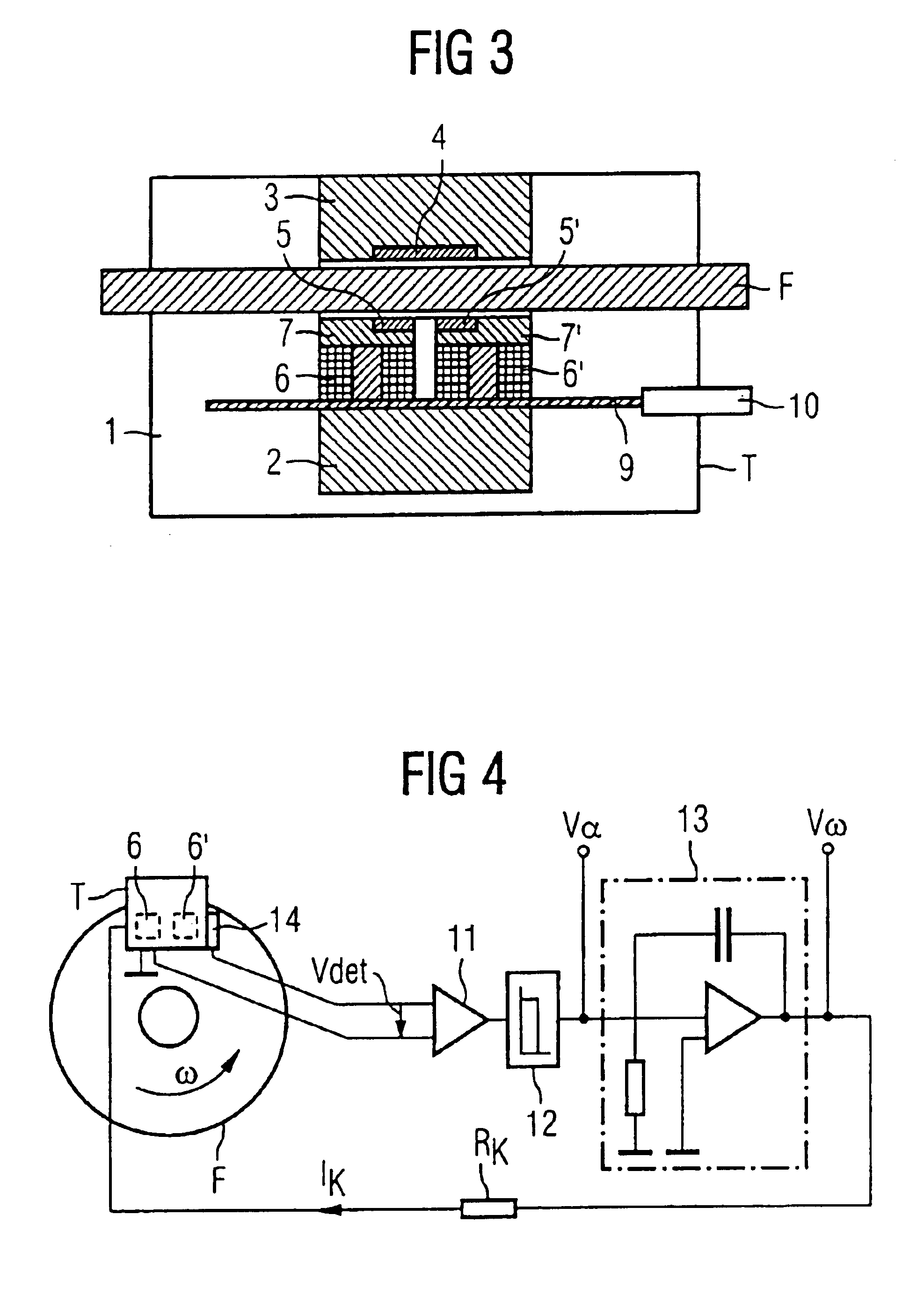Circuit arrangement for evaluating an acceleration sensor using the Ferraris principle
a technology of ferraris and acceleration sensors, applied in the direction of instruments, devices using electric/magnetic means, measurement devices, etc., can solve the problems of significant drawbacks in the evaluation of such acceleration sensors using the ferraris principle in accordance with the prior art, interference such as noise is also amplified, and the loss of sensitivity is kept low, so as to achieve the effect of wide rotational speed range and low loss of sensitivity and signal-to-noise ratio
- Summary
- Abstract
- Description
- Claims
- Application Information
AI Technical Summary
Benefits of technology
Problems solved by technology
Method used
Image
Examples
Embodiment Construction
FIG. 1 has been explained herein above. FIG. 2 and FIG. 3 show, by way of example, a known measuring head T of an acceleration sensor using the Ferraris principle, in a side view (FIG. 2) and a corresponding front view (FIG. 3).
The measuring head or probe T is constructed on an installation sheet or in a housing 1 and has a detector-side flux-guiding structure 2 and a flux-guiding structure 3 on the side of the Ferraris disk for the magnetic flux, which describe a cross section in the shape of a horseshoe. The flux guidance structure 3 has a first permanent magnet 4. Two detector coils 6 and 6′ arranged in parallel and having a respective core are fitted to the other flux guidance structure 2 at the open end of the cross section in the shape of a horseshoe on a coil plate 9. Fitted on the latter, in turn, in each case is a flux guidance structure 7 and 7′ with respective permanent magnets 5, this being done such that the permanent magnets 4 and 5 are situated opposite one another an...
PUM
 Login to View More
Login to View More Abstract
Description
Claims
Application Information
 Login to View More
Login to View More - R&D
- Intellectual Property
- Life Sciences
- Materials
- Tech Scout
- Unparalleled Data Quality
- Higher Quality Content
- 60% Fewer Hallucinations
Browse by: Latest US Patents, China's latest patents, Technical Efficacy Thesaurus, Application Domain, Technology Topic, Popular Technical Reports.
© 2025 PatSnap. All rights reserved.Legal|Privacy policy|Modern Slavery Act Transparency Statement|Sitemap|About US| Contact US: help@patsnap.com



